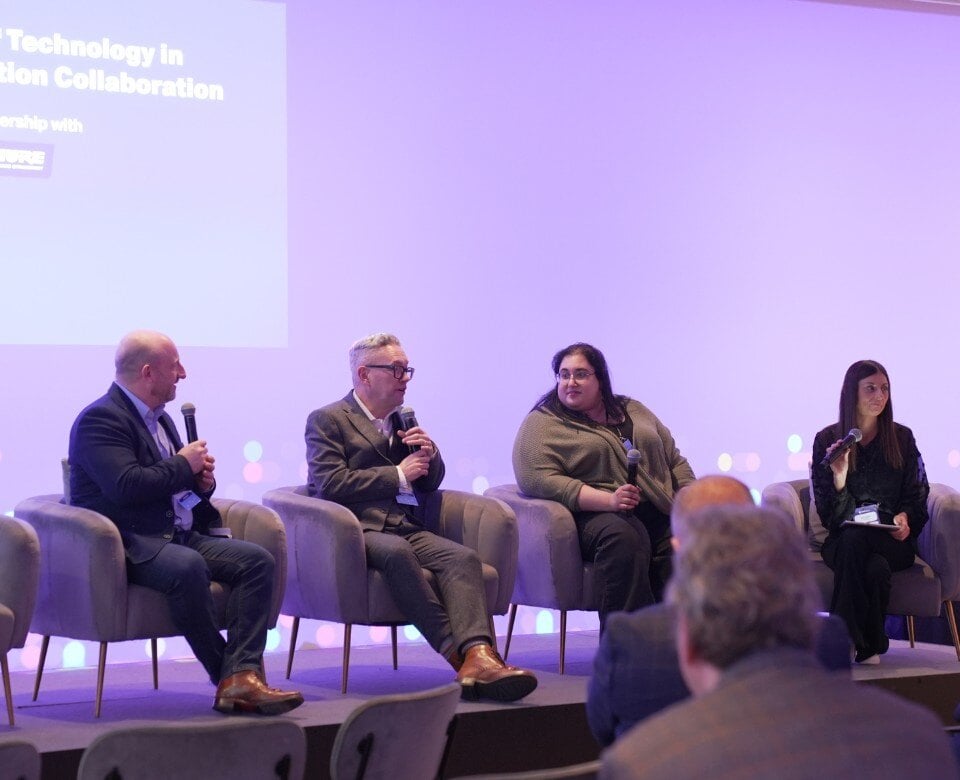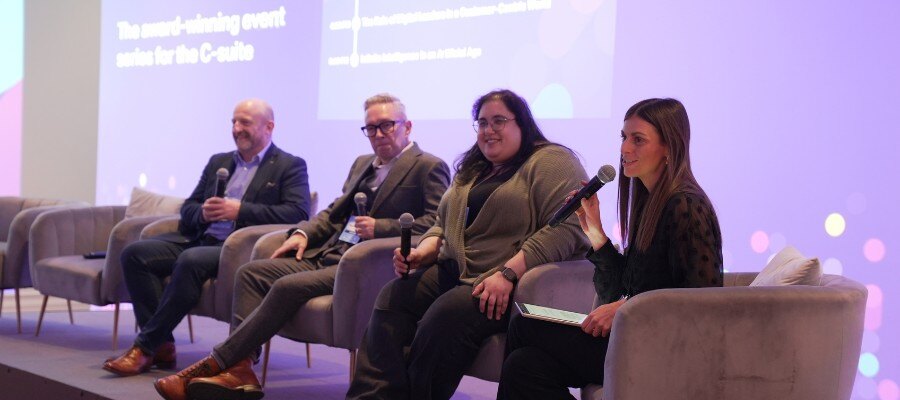
The power of technology and cross-organisation collaboration
What is the role of technology in cross-organisation collaboration? Technology leaders explored the nuances of today’s hybrid work landscape, the importance of innovation and the potential for groupthink in collaborative settings, in a HotTopics panel debate, in partnership with Shure.
In today’s hybrid work landscape, effective organisation-wide collaboration has become essential to driving efficiency and growth. The days of siloed teams, systems and data are over – instead there’s a move towards greater cross-functional collaboration, interdisciplinary teams and shared goals in search of business alignment and speed.
In this panel discussion, C-level technology executives discussed how innovative technologies can help to bridge the gaps between teams, departments and organisations—building cohesive, productive and innovative working environments, which help drive talent attraction, retention and high-performing teams.

Technology collaboration: Meet the panellists
With HotTopics’ Director of Event Production, Abi Labaton, moderating the roundtable discussion, the panellists included:
- Richard Corbridge, CIO, Segro
- Lydia Nicola, Head of IT Operations, Amnesty International
- Peter James, Vice President of Global Business Development, Shure Incorporated
Watch the full roundtable discussion for 'The power of technology in cross organisation collaboration' below:
This roundtable was recorded at The Studio in partnership with Shure. Click 'The Studio' to find out more.
Power of technology collaboration: Key takeaways
- "Collaboration is the heart of what innovation needs to be," stated Rich Corbridge, emphasising its importance in tackling complex challenges like benefits accuracy and supporting vulnerable populations in government operations. Technology must enable collaboration to achieve meaningful outcomes across industries.
- Amnesty International’s Lydia Nicola shared how technology supported a massive collaboration effort: "Publishing a report with 150 people working on a single Word document" showcases how digital tools manage complex evidence-gathering processes and foster global teamwork.
- Lydia Nicola emphasised the value of training, stating, "Organisations haven’t been open to teaching employees how to use tools effectively." Clearer guidelines on tool usage can reduce this confusion and improve productivity overall in the face of abundant communication platforms.
- Peter James highlighted AI tools like transcription and Copilot, which "allow everyone to partake equally" in meetings, while also cautioning that they are "not a silver bullet" for addressing disparities, particularly for non-English speakers or accessibility challenges.
- Virtual meetings can create hierarchies based on technology quality. Peter James explained, "The person with the poorest sound quality isn’t ranked or considered with the same level of importance," stressing the need for consistent standards.
- Lydia Nicola proposed that companies establish cultural norms—starting with set response times, such as replying to Teams messages within 12 hours and emails within 48. "Not many companies are good at actually defining that kind of thing. When they are, I think you generally get happier asynchronous communication and live communication when what's needed," she added.
- Accessibility improvements often have widespread benefits. For example, drop curbs were initially designed for wheelchairs but also helps parents with prams and delivery workers. In comparison, Lydia argued that accessibility tools in technology can provide unexpected advantages for all users.
- Peter commented that AI tools that capture meeting content ensure "voice is data," enabling greater accessibility and allowing participants’ contributions to be revisited. This capability helps amplify overlooked voices and promotes further equity in collaboration.
- Excessive pre-meeting rehearsals can lead to groupthink. Rich Corbridge observed, "By the time we got to the meeting, nobody disagreed because everything was rehearsed." Encouraging diverse viewpoints in this case is vital to fostering innovation—resulting in a healthier, more free-flowing conversation.
- Tools like Copilot, mentioned consistently throughout the panel, have helped distribute information efficiently, reducing the need for large meetings. "AI makes non-attendance less detrimental and improves productivity," noted Peter, demonstrating how technology can streamline communication.
This roundtable debate was made in partnership with Shure.
Join the Collaboration Culture community
HotTopics, in partnership with Shure, proudly introduces Collaboration Culture—an exclusive community for technology leaders dedicated to shaping the future of hybrid working.
SUBMIT A COMMENT
RELATED ARTICLES
Join the community
To join the HotTopics Community and gain access to our exclusive content, events and networking opportunities simply fill in the form below.

